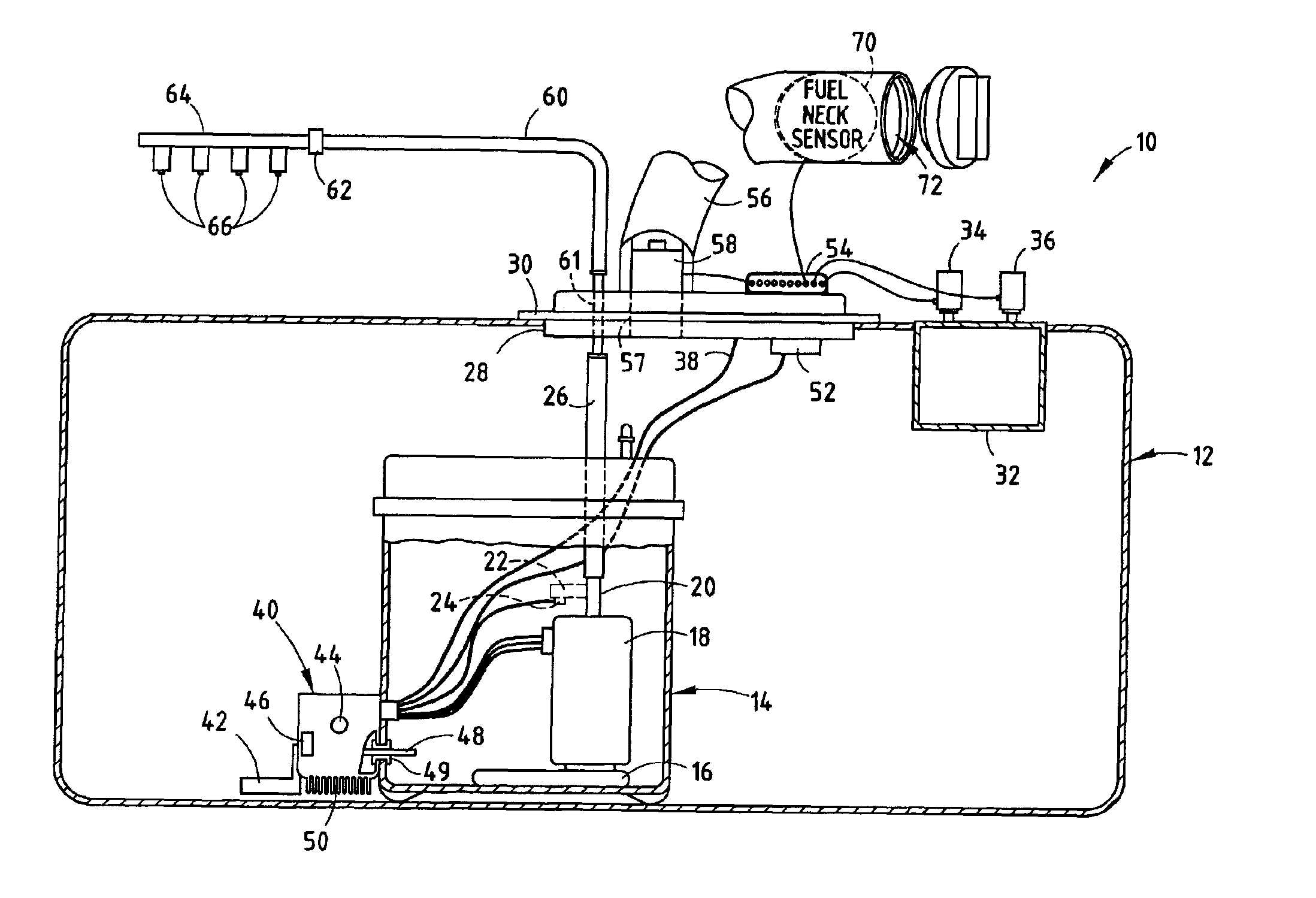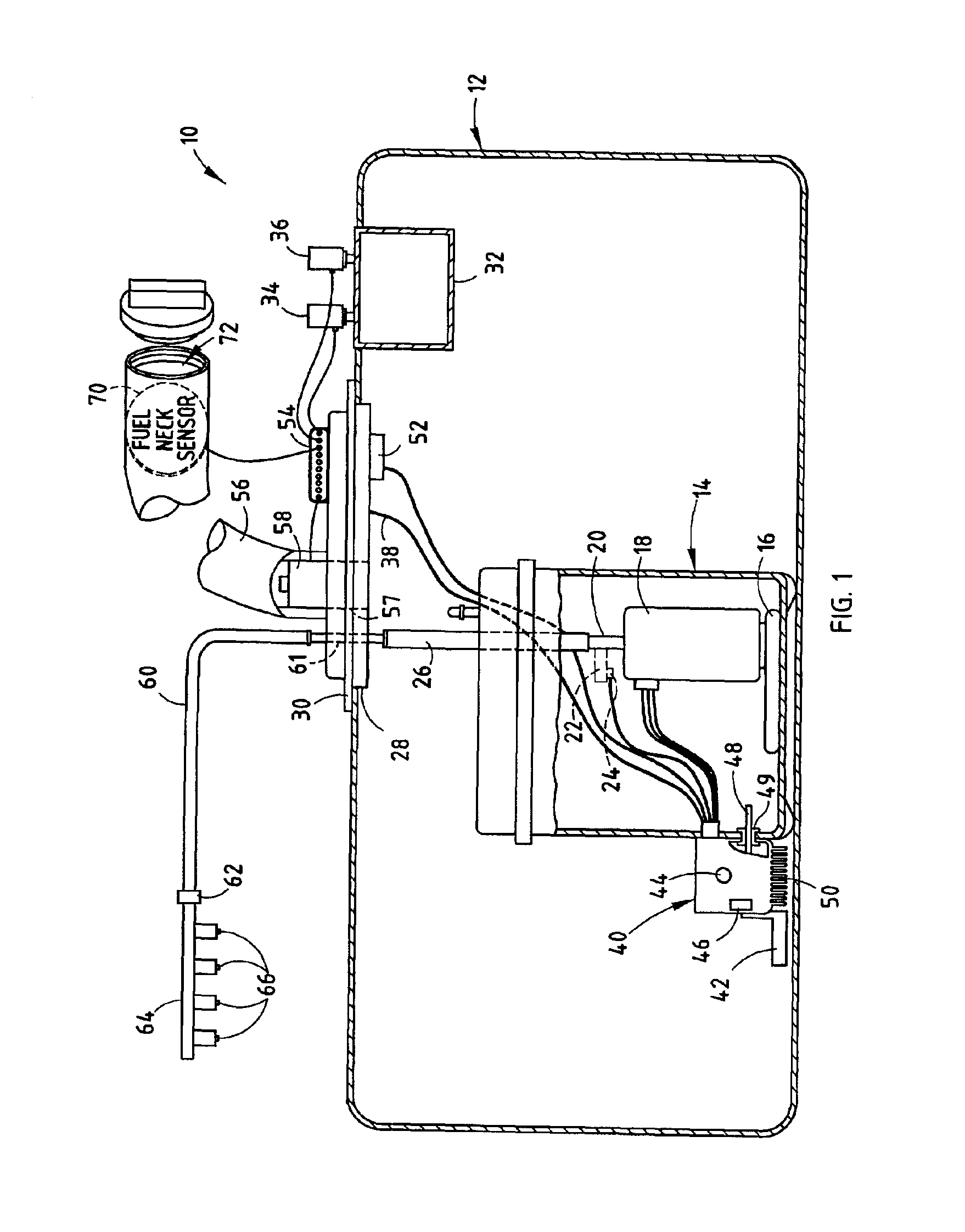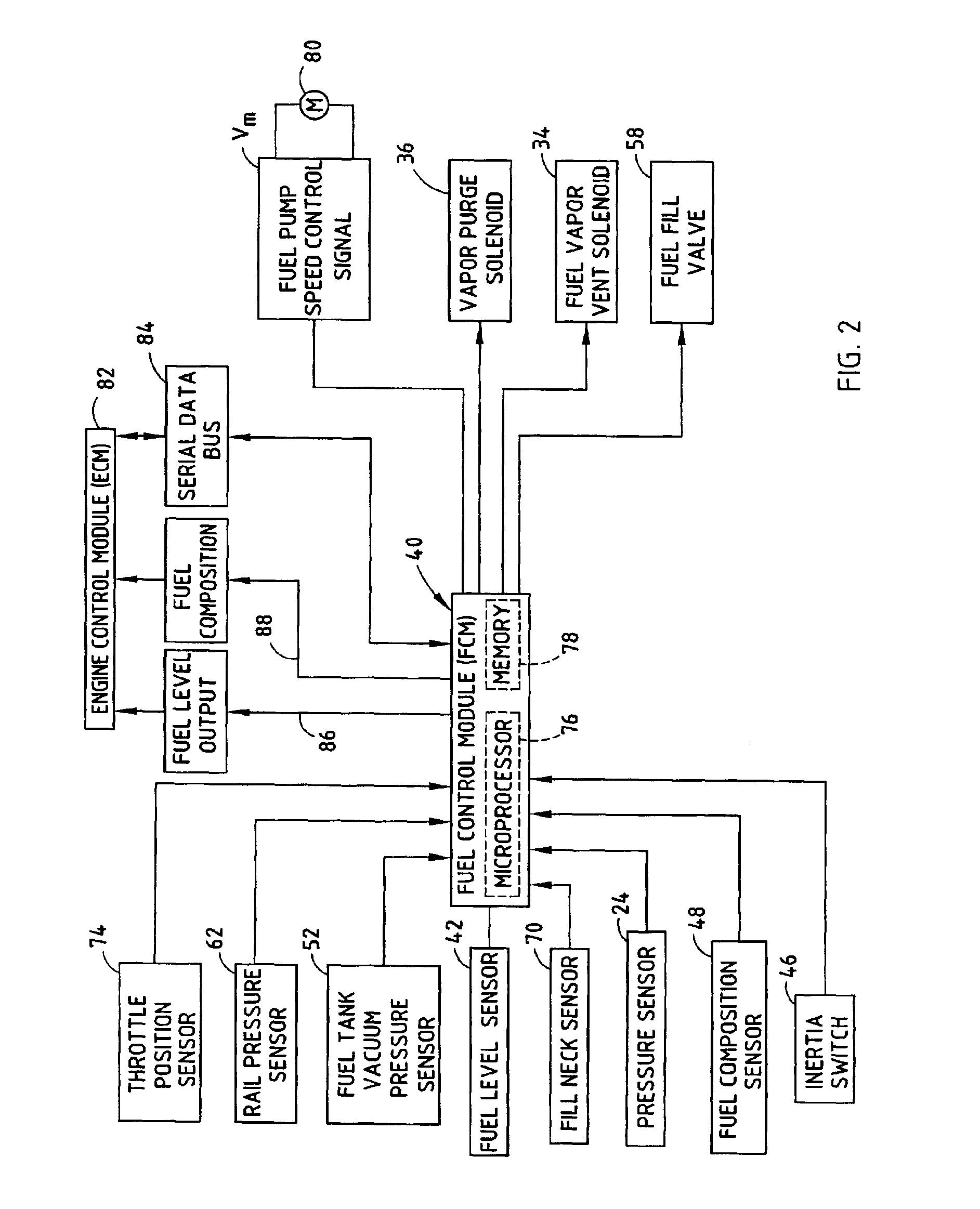Vehicle fuel management system
a fuel management system and vehicle fuel technology, applied in the direction of machines/engines, electric control, combustion air/fuel air treatment, etc., can solve the problems of unfavorable fuel pump operation, continued full speed operation of fuel pump further consume electrical energy, unwanted gas vapor, etc., and achieve cost-effective control
- Summary
- Abstract
- Description
- Claims
- Application Information
AI Technical Summary
Benefits of technology
Problems solved by technology
Method used
Image
Examples
first embodiment
Referring to FIG. 1, the vehicle fuel management system 10 is generally illustrated for use in on-board management and control of fuel for an engine in an automotive vehicle. The vehicle fuel management system 10 integrates various fuel related functions generally associated with the fill, storage, and delivery of fuel to the engine in an automotive vehicle. The vehicle fuel management system 10 includes a fuel delivery system for delivering fuel from a fuel storage tank 12 to a fuel rail 64 associated with the vehicle engine. The vehicle fuel management system 10 also controls the fuel fill operation to fill and store fuel in the fuel storage tank 12. Further, the fuel management system 10 controls the fuel vapor vent and purge operations to vent pressurized gas and purge evaporated vapor emissions from a fuel collection canister, respectively. The various fuel related functions performed by the fuel management system 10 are integrated together and are adapted to be controlled loca...
second embodiment
the fuel management system 10 is illustrated in FIGS. 5 and 6 with the fuel control module 40 mounted to the fuel reservoir assembly 14, absent the return path 22 and pressure sensor 24 shown in the first embodiment. The fuel management system 10 of the second embodiment has no return path for returning fuel back into the fuel reservoir assembly 14, and thus is a returnless fuel delivery system. Instead, the fuel that is pumped into the pump outlet 20 is passed through both fuel delivery line 26 and chassis line 60 and is supplied to the fuel rail 64.
As shown in FIG. 6, the fuel rail pressure sensed at the fuel rail 64 via pressure sensor 62 is provided as an input to the engine control module 82. The engine control module 82 generates a pulse-width modulated (PWM) output command signal via control logic 90 and transistor 92 that is communicated as a command signal to the fuel control module 40. The engine control module 82 has a microprocessor and memory containing the control logi...
fourth embodiment
the fuel management system 10 showing yet a further fuel delivery system is illustrated in FIGS. 11 and 12. In FIG. 11, the fuel management system 10 is shown having the fuel control module 40 disposed within the fuel storage tank 12 and connected to the fuel reservoir assembly 14. In this embodiment, the outlet 20 of the variable speed fuel pump 18 is configured to pass through a flow path 45 provided internal to the fuel control module 14 which, in turn, is connected to the fuel delivery line 26. Disposed in communication with the internal flow path 45 and module 40 is the flow sensor 124 (see FIG. 12) integrally mounted within the fuel control module 40. The flow sensor 124 monitors the rate of flow of fuel through flow passage 45 internal to the fuel control module 40. Accordingly, by employing a flow sensor 124 internal to fuel control module 40, a reduction in the wires and external components is achieved.
Referring particularly to FIG. 12, the fourth embodiment of the fuel man...
PUM
 Login to View More
Login to View More Abstract
Description
Claims
Application Information
 Login to View More
Login to View More - R&D
- Intellectual Property
- Life Sciences
- Materials
- Tech Scout
- Unparalleled Data Quality
- Higher Quality Content
- 60% Fewer Hallucinations
Browse by: Latest US Patents, China's latest patents, Technical Efficacy Thesaurus, Application Domain, Technology Topic, Popular Technical Reports.
© 2025 PatSnap. All rights reserved.Legal|Privacy policy|Modern Slavery Act Transparency Statement|Sitemap|About US| Contact US: help@patsnap.com



